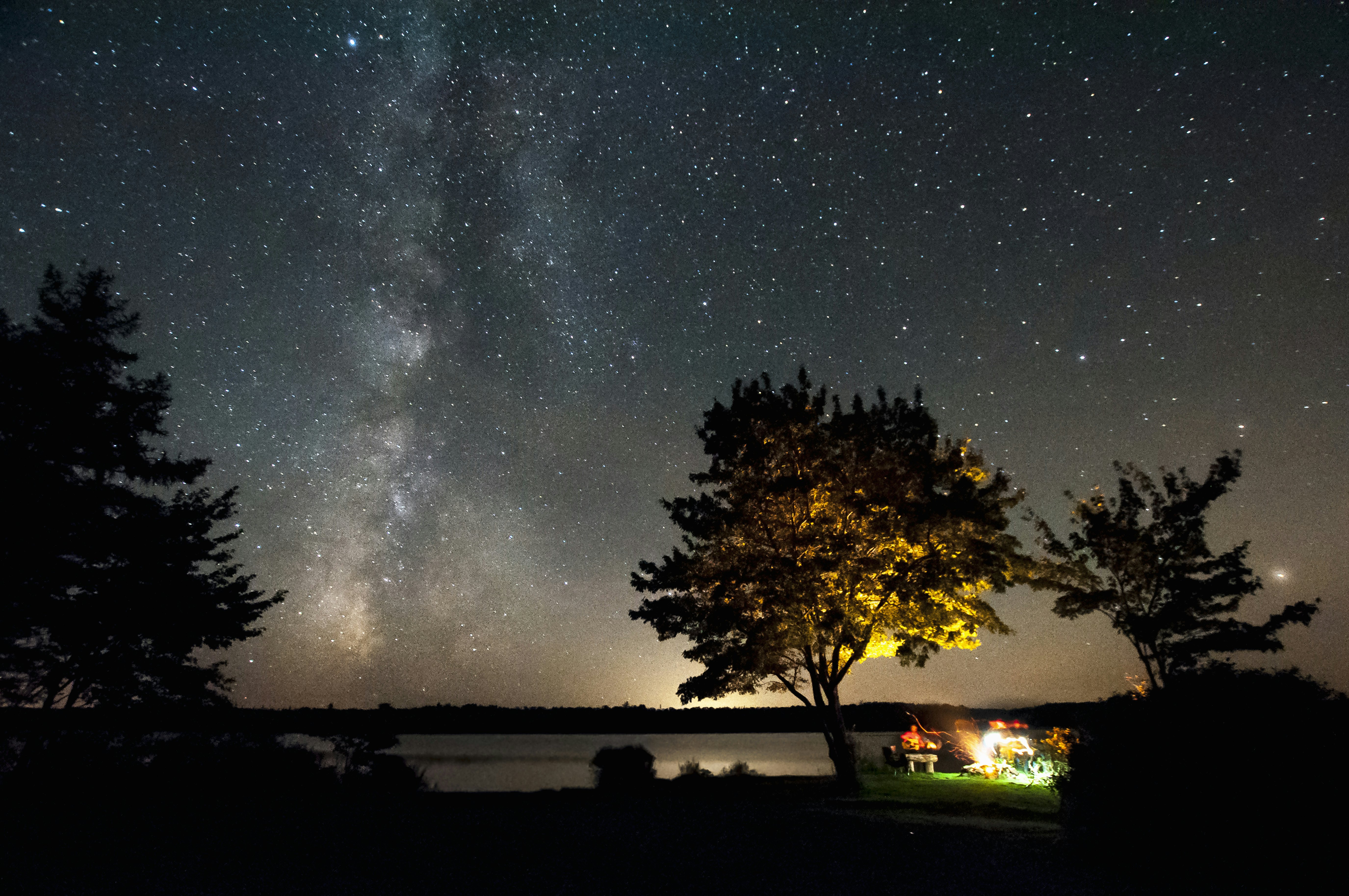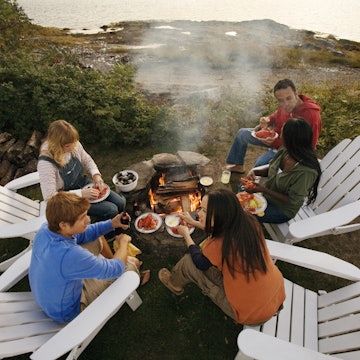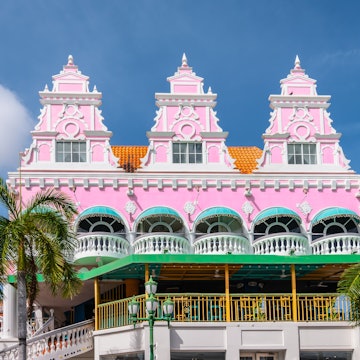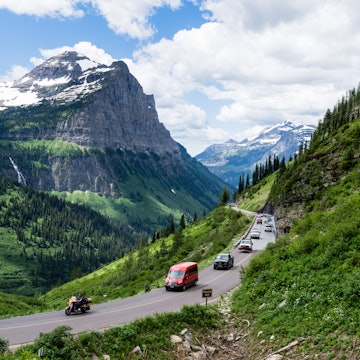

Nova Scotia has plenty of options for budget travelers – and lots involve experiencing its wild landscape © Seth K. Hughes / Getty Images
Nova Scotia, Canada’s second smallest province, offers a surprising variety of landscapes. Rocky headlands end in sweeping crescents of white sand, and the ancient mountains of Cape Breton Island add another dimension. Mammoth tides pick fishing boats up and set them down again in the Bay of Fundy, and rivers stitch together small lakes across the interior. The capital, Halifax – home to a third of Nova Scotia’s population – its walkable waterfront is a beehive of bars, restaurants and attractions. The key to visiting Nova Scotia on a budget? Get outside and explore all these beautiful places.
“Canada’s ocean playground,” as it’s nicknamed, offers a wide selection of accommodations, activities and food options, making Nova Scotia a budget-friendly destination. July and August – when most visitors arrive and Nova Scotians are out and about – are the most expensive months, but even peak season is made affordable by making informed choices and following these tips.
Daily Costs
Hostel room: $40-150
University residence room: $56-150
Basic room for two: $125-400
Self-catering apartment (including Airbnb): $100-335
City bus or ferry ticket: $2.75
Coffee: $2-6
Sandwich: $5-18
Dinner for two: $50-150
Beer/pint at the bar: $6-12
Whale watching tour: adult $50-85, children $25-60
Average daily cost per budget traveler: $150-300

Driving is the cheapest way to get to and around Nova Scotia
Visitors from the far reaches of North America and beyond must fly into Halifax’s Stanfield International Airport. Halifax public transit runs an airport shuttle for $4.25. Rental cars can be scarce in the summer and add significantly to a travel budget, so if you do go with a rental, book early. People within one or two days of driving to Nova Scotia can skip the flights and rental cars, saving a significant amount of cash.
Without a vehicle, getting around Nova Scotia is difficult as there’s little public transportation outside Halifax – driving into Nova Scotia guarantees you access to all the free things to do and the cheaper accommodation options beyond the city. Arrival from Maine and New Brunswick by car ferry is expensive, so budget travelers should drive into Nova Scotia from New Brunswick.
How you can drive, fly, float, cycle and more around Nova Scotia
Spring and fall are the cheapest times to visit Nova Scotia
Some costs in Nova Scotia might be lowest in winter, but only marginally. Food and drink prices at the many grocery stores and restaurants don’t vary much from season to season. The cost of accommodations also remains relatively steady year-round, except in July and August, when it spikes, especially in Halifax. On the other hand, the price of gas is usually lower before and after the busy summer driving season. In late summer and fall, farmers markets and U-picks burst with affordable produce. Share a seaside cabin or rental home with friends and family to cut down on individual accommodation costs.
University residences are the alternative to hostels
Hostels are literally few and far between in Nova Scotia. The Highlands Hostel in Cape North near the Cabot Trail, one of the world’s great scenic drives, is open year-round with dorm beds and private rooms from $50 to $150. However, there just might be as many universities, which rent out their student housing between May and August. Though sparsely furnished, they include linens and towels in clean, secure buildings. Some require a minimum two-night stay. Prices range from $56 for a single to $150 for a suite. Try Dalhousie, St. Mary’s, Mount St. Vincent and King’s College in Halifax, Acadia in Wolfville, Dalhousie in Truro, St. Francis Xavier in Antigonish and Cape Breton University in Sydney.

Take advantage of Nova Scotia’s many campgrounds
The biggest savings come to those happy to pitch a tent at one of Nova Scotia’s campgrounds. Campground locations in the two national parks – Cape Breton Highlands and Kejimkujik – vary from remote backcountry to roadside, while private campgrounds are plentiful and tend to be more family-oriented with lots of activities for kids. The most affordable camping in Nova Scotia is found at its 20 provincial parks, where basic campsites start at about $25 a night. Many provincial sites come with views of the ocean and direct access to beaches, forest walks and lakes, and nearly all come equipped with indoor washrooms, showers and cooking huts where campers can prepare their own meals and wash dishes. Most have RV hookups.
These are Nova Scotia’s 8 best national parks and historic sites
Hit Nova Scotia’s scenic routes, beaches, hiking trails and waterways
When in Nova Scotia, the mantra is “get outside,” which is also the most budget-friendly way to explore the undulating coastline and inland waterways. Follow the designated scenic routes such as Marine Drive, the Lighthouse Route and the Bras d’Or Lake Scenic Drive. Beaches number in the hundreds, so there’s always one handy near a campground or rural rental should you wish to stroll, build sandcastles or just read a book to the hush of waves against the sand. Some hiking trails, like the 119km (74-mile) Rum Runners Trail, are built on former railway beds. Others follow rivers and cut through park wilderness like the 7.2km (4.5-mile) Salmon Pools Trail in Cape Breton Highlands National Park. Except for a $9 daily entry fee in the national parks, hiking is free.
Look for free entry days and discounts at museums
On Thursday evenings, admission is free to the Art Gallery of Nova Scotia in Halifax, where you'll find works by Nova Scotia artists like Maude Lewis. At other attractions, look for family rates. The Maritime Museum of the Atlantic on the Halifax waterfront, which displays artifacts from the Titanic, asks $9.55 per adult in peak tourist season, while the off-season family rate is just $11.85. AAA and CAA members, and armed forces personnel get a buck off. Entry fees to most rural museums are often just a few dollars.
Lighthouses, whales and fishing villages: these are the best places to visit in Nova Scotia

Eat for less by buying local and cooking for yourself
Cooking your own meals is always easy on the travel budget, especially away from home. Whether it’s in your full kitchen at your oceanfront rental or over the fire at the campground, homemade meals and snacks save bundles. If U-picks or foraging are your thing, even better. Otherwise, look for small, roadside farm stands that often sell via the honor system – take a cuke, leave a quarter. Province-wide, farmers markets during harvest season – which runs from June to November and longer – are the best source of local, high-quality and better-tasting produce, meats, cheeses and beverages. Pack a picnic for road trips and hikes. Shopping local also leads to eating like a local: gather young veggies to make Nova Scotia hodge podge, a buttery vegetable chowder.
Save your dime for high-value splurges
Put all those savings into activities and goods that will bring the most satisfaction. A whale-watching trip – a bargain at well under $100 – leaves every passenger with incredible memories. Take a vineyard tour in the Annapolis Valley at wineries like Benjamin Bridge for an in-depth understanding of how Nova Scotia’s wines gained a reputation for quality so quickly – and take advantage of the samples.
Order the local craft beer at a bar or taproom, where a couple of bucks more per pint gets you tons more flavor and stories to tell folks back home. Hear the sailor’s tale behind Boxing Rock Brewing, sample Beth’s Black Oyster Stout from Sober Island Brewing and learn why Tatamagouche Brewing named its pale ale Hippie Dippie. Watch for happy hours at most bars to save on craft drinks.
Plan your trip to Nova Scotia:
Add these top experiences to your itinerary
Figure out the best times to visit
The locals think you should know these things before you visit
Plan the ultimate Nova Scotia road trip with these incredible routes
















